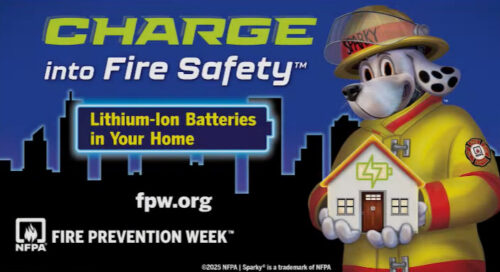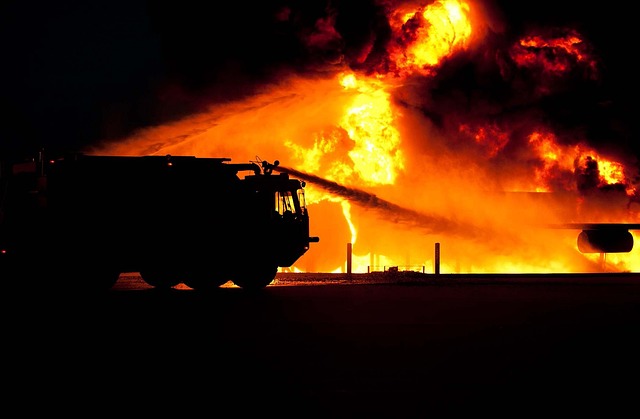
October is Fire Safety Month, Be Aware of Lithium-Ion Dangers

October is National Fire Safety Month, observed to increase fire safety awareness and prevent home fires through education and proactive measures. It’s in October as it commemorates the Great Chicago Fire of 1871. Three hundred people died during that fire and 100,000 people were left homeless. The exact cause is unknown but it started in a barn and eventually destroyed 17,000 buildings.

Smoke Alarms
A crucial focus is having working fire alarms. The First Alert 2 in 1 smoke and carbon monoxide alarm is on sale this month at Longenecker’s True Value. Have smoke alarms placed on every level of your home and inside and outside sleeping quarters. Test the batteries regularly, monthly is recommended. As cold weather arrives and furnaces and fireplaces are being used, make sure you also have a carbon monoxide detector if your smoke alarm isn’t a 2 in 1 type.
Escape Plan
Develop an escape plan with all members of your household, designating at least two ways out of every room. Choose an outside meeting place a safe distance from your home and practice the plan. Explain the fire safety technique “Stop, Drop, and Roll” is used when clothing catches fire, instructing you to stop moving, drop to the ground, and roll to extinguish the flames by cutting off their oxygen supply. And how to use a wet towel to protect your lungs by covering your nose and mouth to filter smoke, and to help seal doors and vents to block smoke from entering a room.
Fire Extinguishers
Keep a fire extinguisher on every level of your home and explain to everyone how to use it. You can buy fire extinguishers for as little as fifteen dollars up to a hundred dollars.
Cooking Hazards
Unattended cooking is a leading cause of home fires. Never leave cooking food unattended. Keep a fire extinguisher in the kitchen. Additionally, keep anything that can burn at least 3 feet away from heat sources like space heaters and fireplaces. I remember going into a home once that was destroyed by fire at Christmas time. They had a live Christmas tree and it was drying out. The father was trying to move a flaming frying pan out the door near the tree. The tree went up in flames and consequently the house was engulfed. Fortunately, nobody died in that fire but it was a sad sight to see all the children’s toys burned up, along with everything they owned.
Lithium-Ion Battery Dangers
The National Fire Protection Association’s (NFPA) theme for 2025’s Fire Prevention week (October 5–11) is “Charge into Fire Safety: Lithium-Ion Batteries in Your Home.” This campaign focuses on the importance of safely buying, charging, and recycling lithium-ion batteries. Anything you use with rechargeable batteries, such as smart phones, tablets, laptops, cameras, cordless vaccuums, power tools, lights, etc. use lithium-ion batteries. These batteries pose their own fire risk as lithium-ion battery fires are difficult to extinguish due to a phenomenon called thermal runaway, where a fire can reignite even after appearing to be put out. And lithium-ion batteries can explode in rare cases. So please make sure you follow these safety practices:
- Use the Correct Charger
Always use the manufacturer-provided charger designed specifically for your device. - Avoid Overcharging
Disconnect devices once fully charged and consider using a timer as a reminder. - Monitor for Damage
Discontinue use immediately if you notice the battery is leaking, swelling, changing color or shape, or making odd noises. - Store Properly
Keep batteries and devices at room temperature, away from flammable materials and direct sunlight. - Be Smart About Charging Locations
If possible, charge devices outdoors or on a hard, stable surface like a floor, and never on beds, couches, or pillows. - Proper Disposal
Never throw lithium batteries in the regular trash or recycling. Take them to a designated Special Waste Drop-Off Site or recycling center, following local regulations.
